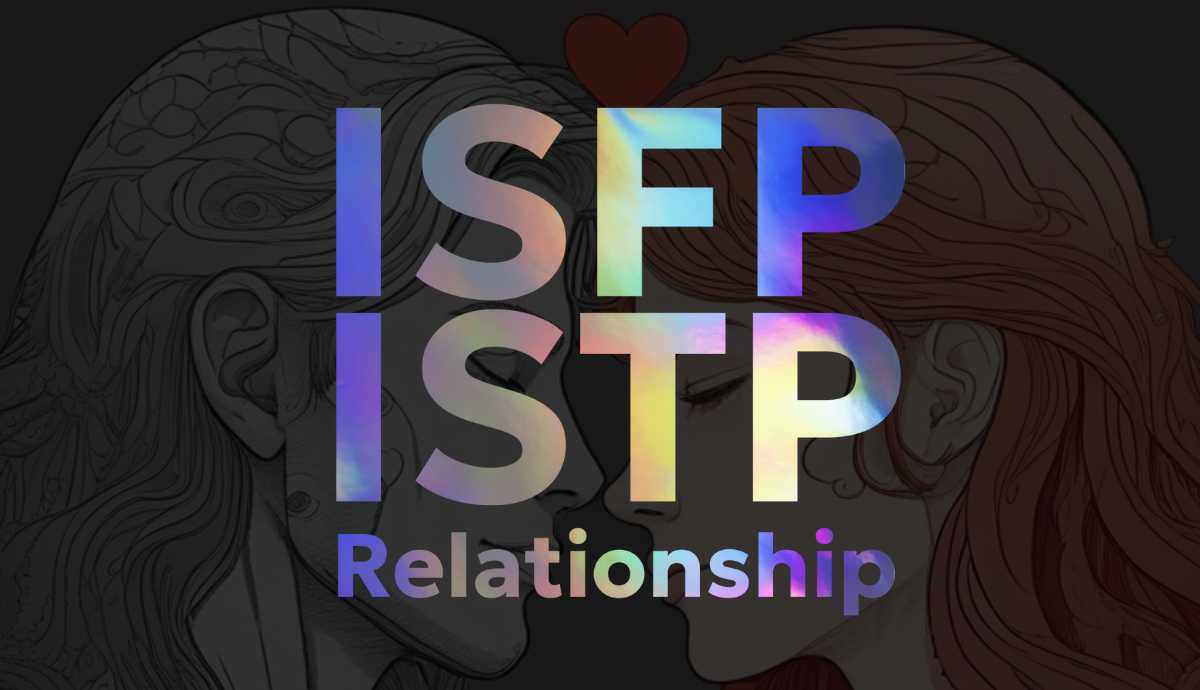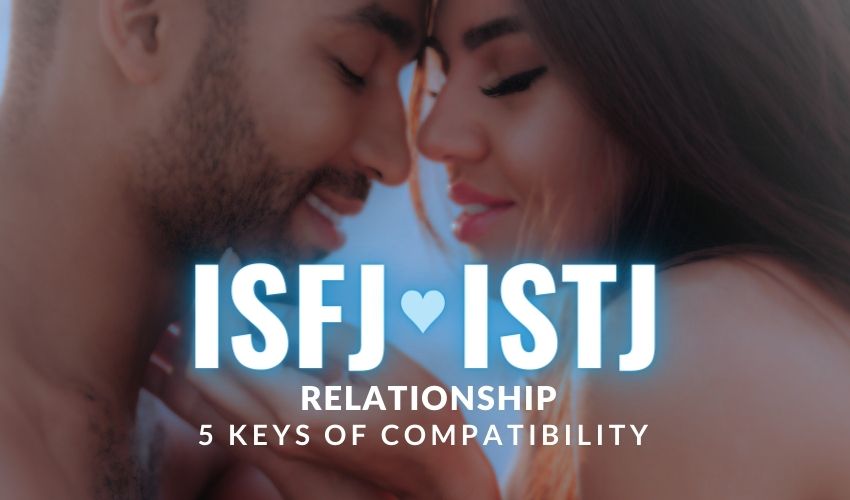INTJ vs ISTJ MBTI[ads_hr hr_style=”hr-dots”]
On the surface, the ISTJ and INTJ similarities can make them appear almost identical to one another. Generally speaking, ISTJ and INTJ both exude a flat affect with a lack of warmth and congeniality. They are both cerebral and phlegmatic in their temperament and may act a bit robot-like. Maybe this is why ISTJ, ESTJ, ENTJ, and INTJ account for roughly 78 percent of middle grade to flag rank officers in the United States military. [source]
A study found that the two predominant types among male atheists were ISTJ (41.4%) and INTJ (14.4%), compared with 16.4% and 3.3% respectively in the wider population. [source] Upon first impression, ISTJs and INTJs may come across as self-absorbed, arrogant, anal-retentive, hypercritical, joyless misanthropes who’s only pleasure in life is popping other people’s idyllic balloons. Although ISTJ and INTJ may appear like twin types, they are quite different. Here is a look at the ISTJ vs INTJ differences and how to tell them apart.
INTJ vs ISTJ Functions
[ads_row][ads_col col=”cell”][ads_color_box color_background=”#000000″ color_text=”#111111″]
INTJ
1. Introverted Intuition (Ni)
2. Extraverted Thinking (Te)
3. Introverted Feeling (Fi)
4. Extraverted Sensing (Se)
[/ads_color_box][/ads_col]
[ads_col col=”cell”][ads_color_box color_background=”#e6e6e6″ color_text=”#5e3156″]
ISTJ
1. Introverted Sensing (Si)
2. Extraverted Thinking (Te)
3. Introverted Feeling (Fi)
4. Extraverted Intuition (Ne)
[/ads_color_box][/ads_col][/ads_row]
Si-dom vs Ni-dom
Ni and Si are essentially opposite functions. Where Ni is concerned with abstract potential, Si is attentive to concrete reality. Introverted intuition reflects on meaning and potential outcomes. It looks past the literal physical appearance of things and infers possible implications of what they represent. But unlike Ne (extroverted intuition) which entertains a multiplicity of impressions to explore, Ni seeks to hone in on a singular truth formulated using the evidence collected (in INTJ’s case) by Te.
Introverted sensing looks to the past and focuses on proven facts and concrete details to inform the course of action they choose to take. They want to go about doing things “the right way”, following a structured approach that has been proven to work either in their direct experience or by trusted authorities and experts. Si respects rules and practical procedure that is effective and functional. Si is less open to risky ideas and in Si-dom types such as ISFJ and ISTJ, they only resort to this when nothing else is working for them.
INTJs spend a lot of time pondering the meaning and significance behind occurrences and events they observe in the real world. They are pattern detectors and this ability allows them to foresee long term possibilities that the more present-focused ISTJ is unlikely to recognize. Ni is very abstract and operates primarily from the subconscious but INTJs actively engage it as they observe and contemplate.
Their thinking faces can appear as a look of displeasure or mild contempt. The “death stare” is when INTJ happens to be looking at someone but is so lost in thought that they don’t realize that they’re staring, sometimes with what appears to be a vaguely menacing scowl. This is probably another example of Ni being being so caught up with abstract cogitations that they are sorely unaware of themselves and their physical environment.
ISTJs are less likely to become so engrossed with their thoughts that they lose touch with their surroundings. ISTJs are very grounded and connected with reality and what goes on around them. They are attuned and responsive to the sights, sounds, tastes, smells and tactile sensations of world. ISTJs are likely to have a good memory especially of things with sensory significance attached to them. They rely on what they know and tend not to venture outside their comfort zones into unfamiliar territory.
ISTJs unlike the INTJs are not inclined to dig into abstract implications or assessing things beyond what can readily be ascertained from the facts. ISTJs rely more on black and white thinking and have little regard for the shades of nuance and meaning that could exist interstitially. They want realistic, practical implementable solutions and do not want to get tied up with quixotic idealism that may threaten to upheave their procedures.. They are sometimes willing to entertain unconventional possibilities but they ultimately prefer what is tried and true.
ISTJ and INTJ both go where the facts take them but it is probably safe to say that there is a spiritual component to the way in which INTJs evaluate and handle facts. INTJs seem to be motivated by transcendence through improvement and pushing the boundaries of what they can know and do. They are rarely satisfied or content with things as they are, and they possess a restlessness that compels them to make things better than they were. They seek to apply the insights that they gain as a means to innovate and make possible what once seemed impossible. ISTJ by contrast is less concerned with innovation and more concerned with doing things “properly” and “by the book”, provided that such procedure has been proven to work.
Inferior Se vs Inferior Ne
Another way of determining a person’s type is by identifying their inferior function. The inferior function can manifest subconsciously as a source of insecurity or anxiety. The individual may distance themselves from it and feel uncomfortable or annoyed by people who express it frequently.
INTJs with their inferior Se for example, tend to put much thought into everything they do and may perceive impulsive and thrill seeking behavior as foolish and meaningless. A suspected INTJ could be outed by their lack of interest in physical thrills such as roller coasters, sports, fancy cuisine or even intimacy. Many INTJs may lament that their lives are boring and may secretly desire to be more carefree and engaging with the world.
ISTJs with their inferior Ne are not likely to display much in the way of creative thinking. They are thinkers like the INTJ but they are not much interested in theorizing and conceptual ingenuity. They are more linear in the way they think and will find it difficult to “think outside the box” and consider multiple alternatives and meaningful associations.
ISTJ vs INTJ Problem Solving
In problem solving, ISTJ will want a clear idea of the problem (I) and attack it by looking for the facts (S) and by relying on a logical, impersonal (T), step-by-step approach in reaching conclusions. Because INTJs are more open to new ideas and risky experimentation, they are likely to be better problem solvers than ISTJs. ISTJs are more risk averse and inclined to stick to proven strategies and prescriptions for success.
ISTJs are typically more conventional and less interested in trying unproven strategies or coming up with novel solutions for the sake of novelty. The tried and true is what they rely on primarily but they are just as systematic as the INTJ in how they execute and implement the methods they select. The advantage ISTJs hold resides in their thoroughness and attention to detail. They possess greater patience and diligence when performing more tedious tasks such as proofreading and combing documents for grammatical, factual and procedural errors. They are probably better suited than INTJs for careers as historians, editors, government inspectors, and computer programmers.
ISTJ in Conversation
- ISTJs talk about descriptive details like what happened/is happening, how things look/looked/feel/felt, reactions to events, the need to act, how to prepare for doing something.
- They are consistently present-oriented, focused on assessing or responding to what is happening in the here and now.
- Respond quickly to how events change, showing cautious optimism or realistic expectations as they get feedback from their actions.
- ISTJs are driven to stick with what they know and love and cherish, often relying on knowledge or methods that have already been proven reliable.
- Tend to be steadfast, dutiful, observant, and capable, taking quiet pride in attending to details/discrepancies that others might ignore/overlook, though they can get easily flustered when too many unexpected things happen.
- Generally admired for their responsible or dependable nature.
- Reliably carries out their tasks and duties in a detailed and thorough manner, knowing the best methods for handling logistics and implementation.
- At their worst, they are unable to sort information carefully and then give in to their most irrational thoughts and imaginings.
- In moments of weakness, they become erratic or unruly. Their failures will involve: being too anxious or worried (catastrophizing), being overwhelmed by too much novelty or change, or micromanaging situations due to unwillingness to delegate.
INTJ in Conversation
- In conversation, INTJs tend to talk about speculations, possibilities, potential, improvements, implications, meanings, questions, the unusual, interesting connections of ideas.
- Tend to be somewhat detached from the present insofar as being focused on interpreting future implications or how to make a change for the future.
- Tend to have some degree of “blind faith” that makes them seem idealistic or aiming a bit too high, less willing to change course even when feedback suggests that they should.
- INTJs are driven to reflect on meaning and implications, often looking towards the future and reflecting on how to carry out their personal vision.
- They tend to be perceptive, insightful, intense, and focused, taking quiet pride when they successfully understand how events will evolve, though they can feel easily frustrated if they cannot see the point/purpose of doing something or when people do not heed their warnings.
- Generally admired for their foresight or wisdom.
- Has an ambitious and lofty vision for oneself or the world, very focused in pursuing an ideal.
- At their worst, they are unable to properly visualize implications and then throw caution to the wind. In moments of weakness, they become reckless or extreme in behavior.
- Their failures will involve: feeling incapable of carrying out their personal vision or realizing their personal potential, not knowing how to proceed because of not grasping the true meaning of events, or not having a meaningful purpose in life.
INTJ
Most Important Aspects
- fidelity
- mutual support
- mutual commitment
- intellectual stimulation
- being listened to
- shared values
- having fun together
Least Important Aspects
- shared religious beliefs
- security
- financial security
- similar parenting styles
- spending time together
- spiritual connection
ISTJ
Most Important Aspects
- fidelity
- mutual support
- being listened to
- mutual commitment
- shared values
- companionship
- security
Least Important Aspects
- shared religious beliefs
- spiritual connection
- shared interests
- similar parenting styles
- sexual compatibility
[ads_color_box color_background=”#000000″ color_text=”#fa8ee6″]Please share this post and subscribe for future updates ;)[/ads_color_box]
Want to know your astrology placements? You can generate your astrology chart here with our free birth chart generator tool.
- related posts:
- INTP/ISTP Inferior Fe Subtypes | mbti-info
- 25 INTJ Statistics | Facts About INTJ
- ENTJ vs. ENTP: What’s the Difference | High on MBTI
- INTJ vs. INFJ: What’s The Difference? | Psyphics
- INTJ vs INTP | Similarities & Differences Between INTPs vs INTJs
- 25 Interesting INTP Statistics & Facts
- The 8 Cognitive Functions Explained - May 17, 2025
- American Presidents Ranked By Zodiac Sign - January 20, 2025
- ESTP and ESFP in love: 6 Dynamics of Their Relationship - September 4, 2024








